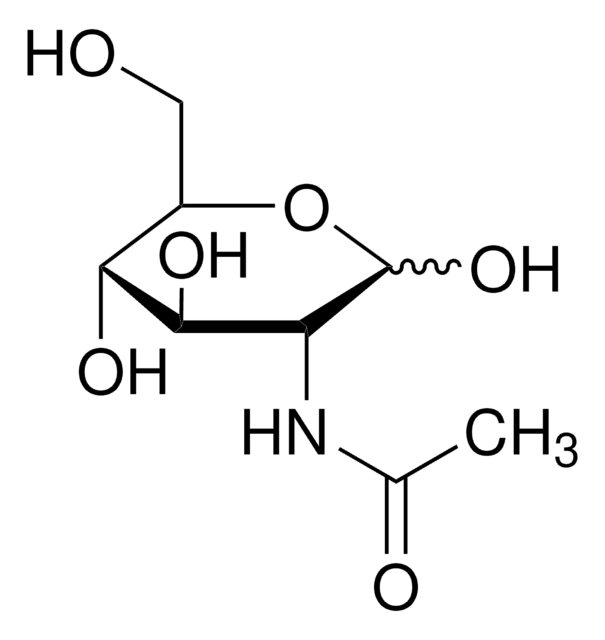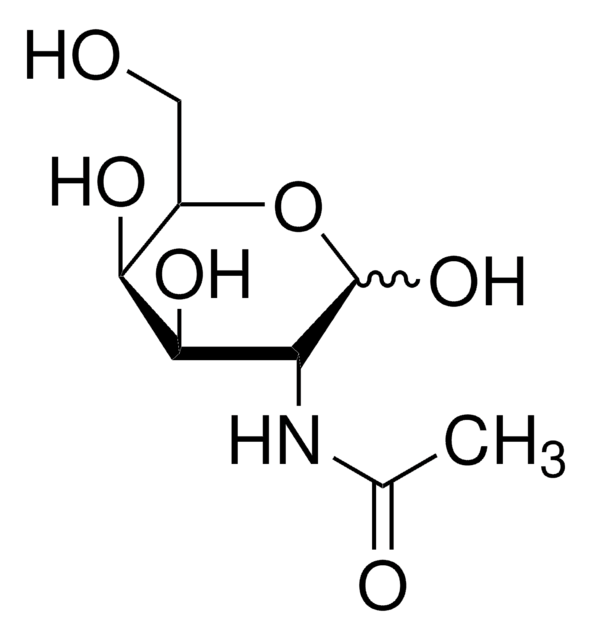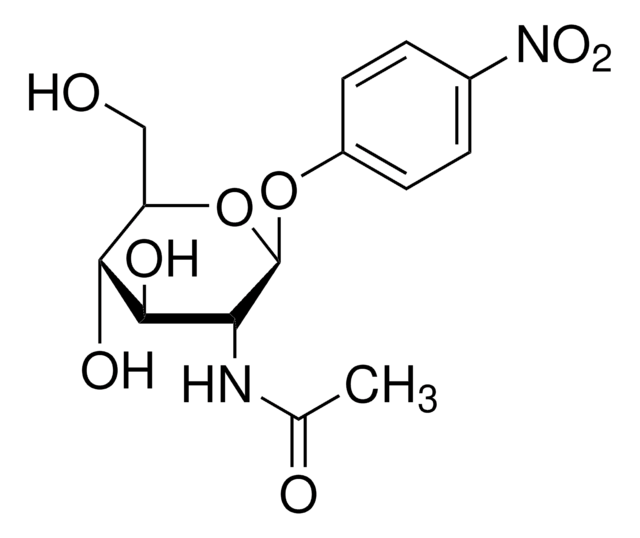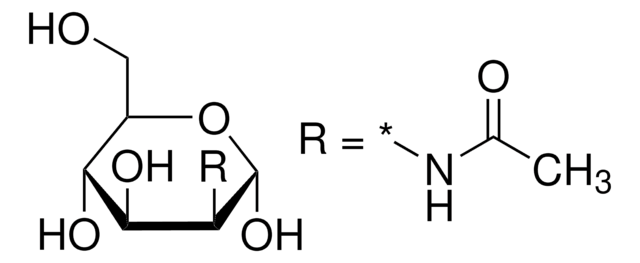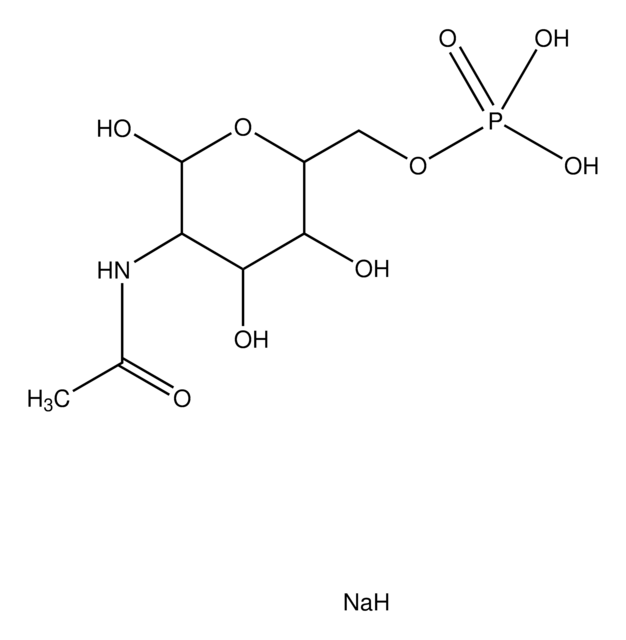A8625
N-Acetyl-D-glucosamine
≥99% (HPLC)
Synonym(s):
2-Acetamido-2-deoxy-D-glucose, D-GlcNAc
About This Item
Recommended Products
biological source
crab (red)
Quality Level
Assay
≥99% (HPLC)
form
powder
technique(s)
HPLC: suitable
color
white to off-white
mp
211 °C (dec.) (lit.)
solubility
H2O: 50 mg/mL, clear to very slightly hazy (colorless to faint yellow solution)
storage temp.
−20°C
SMILES string
CC(=O)N[C@H]1C(O)O[C@H](CO)[C@@H](O)[C@@H]1O
InChI
1S/C8H15NO6/c1-3(11)9-5-7(13)6(12)4(2-10)15-8(5)14/h4-8,10,12-14H,2H2,1H3,(H,9,11)/t4-,5-,6-,7-,8?/m1/s1
InChI key
OVRNDRQMDRJTHS-RTRLPJTCSA-N
Looking for similar products? Visit Product Comparison Guide
General description
Application
- as sugar for competitive inhibition in lectin histochemistry
- as a component in Barbour-Stonner-Kelly (BSK) medium for cultivating Borrelia burgdorferi spirochetes strains
- as a component of binding buffer to suspend Streptococcus pneumoniae strains for inhibition assay to examine the specificity of M-ficolin binding to S. pneumoniae strains
Biochem/physiol Actions
Other Notes
Storage Class Code
11 - Combustible Solids
WGK
WGK 3
Flash Point(F)
Not applicable
Flash Point(C)
Not applicable
Personal Protective Equipment
Certificates of Analysis (COA)
Search for Certificates of Analysis (COA) by entering the products Lot/Batch Number. Lot and Batch Numbers can be found on a product’s label following the words ‘Lot’ or ‘Batch’.
Already Own This Product?
Find documentation for the products that you have recently purchased in the Document Library.
Customers Also Viewed
Our team of scientists has experience in all areas of research including Life Science, Material Science, Chemical Synthesis, Chromatography, Analytical and many others.
Contact Technical Service